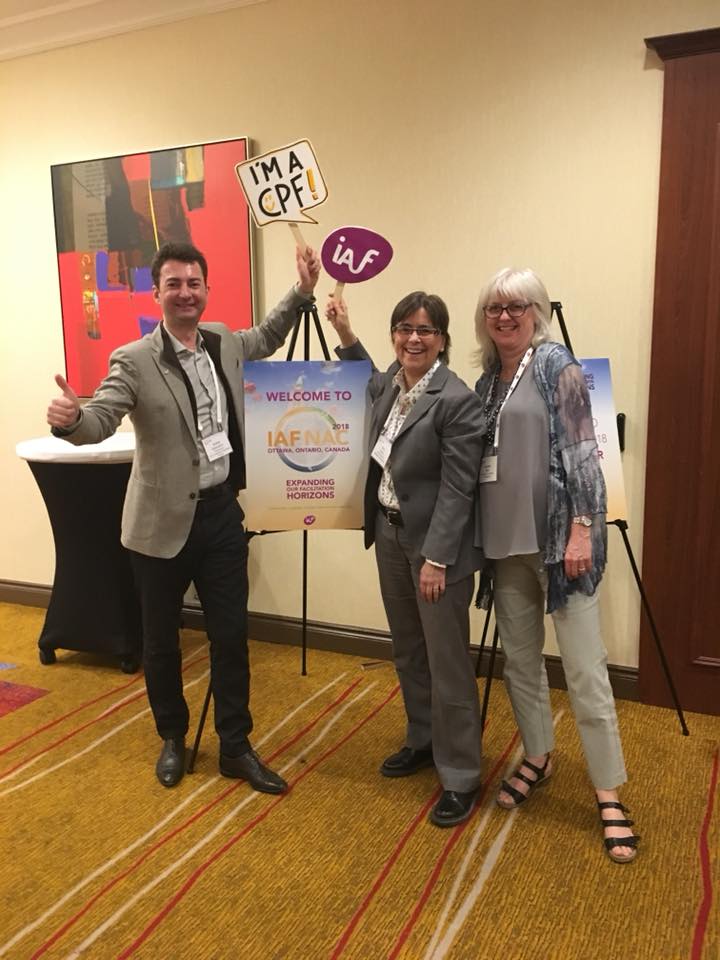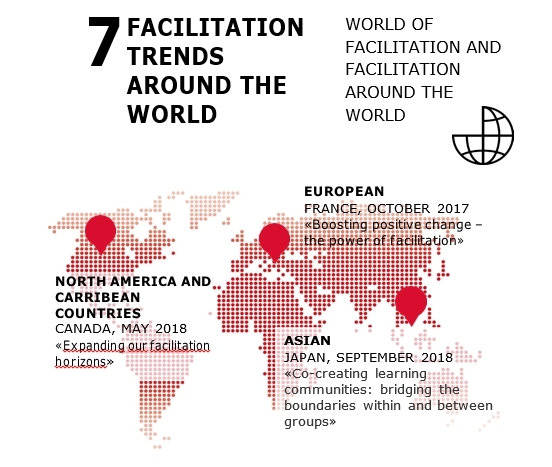
Over the previous year Andrei Kolesnikov, facilitator and CEO of PowerLexis, received CPF IAF international certification and attended three international conferences of IAF. Finally, Adrei Kolesnikov highlighted 7 key facilitation trends and expanded in detail on each one of them.
1. The growth in implementation of tools, technologies and expert background in facilitation sessions
Recently, clear boundaries for the use of facilitation tools have been erasing. We see the increasing synergy of facilitation technologies and practices with the related areas such as coaching and training, management and marketing, system and design thinking, psychology and psychotherapy, etc. ever more often. This trend is clearly traced during problem discussions at IAF international conferences. Facilitation becomes an integral part of methods applied in other fields, sometimes it is impossible to precisely define the its scope.
The trend is reflected right in the names of some master classes and workshops. So, at master classes “Synergy of Facilitation and coaching — the best breakthrough method of work” and “Coaching and facilitation: similarities and differences” that took place in Asia the thin borderline between these two domains was discussed.

"Psychodrama and facilitation", "Facilitation and creative thinking, design thinking", "Systems thinking - facilitation" taking place in Japan. Public speaking and storytelling workshops in North America. Theory U for management and facilitation for managers were discussed at facilitation workshops at European Conferences. There was also a master class on the embodiment approach involving the combination and active work with the body.
A comprehensive approach to facilitation sessions enables us to think through and implement complex unstandardised projects as well as to include some groundbreaking new things in the sessions themselves. The outcome of applying such concept may turn to be even more profound and diverse. Usually one person, facilitation, cannot have all the competencies from the related areas at once. Therefore, it is much easier for the companies engaged in developing several related areas to cope with such projects.
The same refers to the use of facilitation tools in various trainings and sessions in related areas, which from a facilitative perspective gives way to a more efficient group process management.
2. Shift to the method of positive change: AI (appreciative inquiry) & SF (solutions focus)
The positive change approach becomes more and more in facilitation sessions in the West, in the US, and in Asia. The so-called «appreciative inquiry and solutions focus». Focus on positive changes implies the attitude based on pros and positive sides instead of problems.
There is a marked growth in the number of facilitation sessions applying the method of positive change.
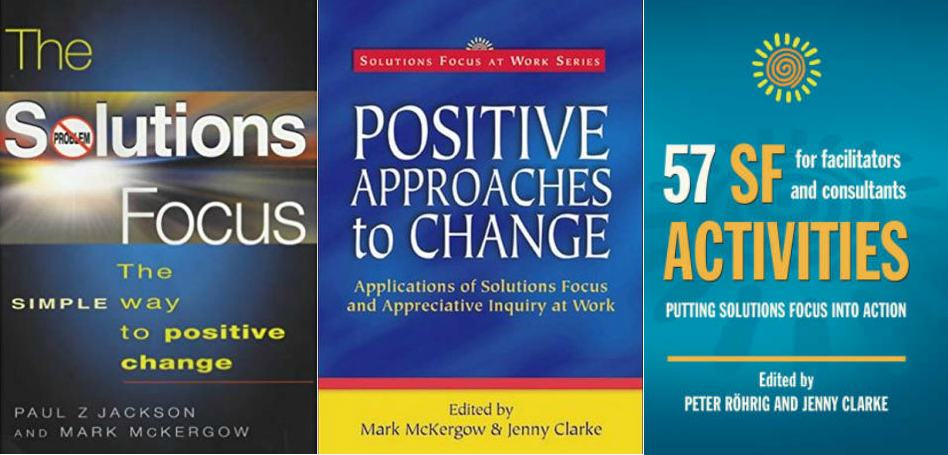
When we think about the ways of reaching the image of the desired future, the first question that very often comes to one’s mind is — “What barriers do we have and what prevents us from achieving our goal?” However, questions with emphasizing the negative aspects often discourage. Therefore, it is better not to discuss the problems, but to talk about those things we already have that allowed us to get reasonably good results and come to where we are now. What positive aspects, our qualities and traits allowed you to achieve the results? then focus on these things aiming to make one more step forward.
At the same time, it is worth remembering that many experts on positive change do not recommend overlooking the opposite method and believe it is necessary to use both approaches as a whole, because balance is vital in dealing with such issues. However, it is good to try and emphasize the positive. Focus solely on the problems kills the energy.
There is a simple common real-life example: a child comes back home from school; the parents ask what marks he got.
“Three As and one C,” the kid answers. In most cases, the first question that follows is: “Where does the C come from?”. It turns out that the three A-marks are taken for granted and require no analysis.
The method of positive change was the theme of a conference that took place in Europe. Звучала она следующим образом – “Внедрение позитивных изменений – сила фасилитации”. More and more positive change oriented masterclasses take place not just in Europe, but as well in Asia and North America. Here are some of them: “The positive change boosting cocktail”, “Appreciative leadership in facilitation”, “Positive change with meaning”, “How the expression of unspoken can boost positive change”, “Redirecting negative energy into positive”, “Working with difficulties — participants’ part”.
It is worth noting that method of positive change is used in other domains, e.g., staff development and in companies at large.
3. The growing impact of building creative atmosphere, setting space and adding new perception channels
The importance of building creative atmosphere by shaping creative space setting starts playing a more prominent role at international conferences. This allows us to immerse deeper into the subject. Thus, unconventional environment is framed with the help of several things:
- • Working not just with the walls, but with the whole space (floor, tables, etc.);
- • Using non-standard items (in addition to traditional posters and facilitation cards use various tiny figures and even improvised tools);
- • Unusual ways of using these items.
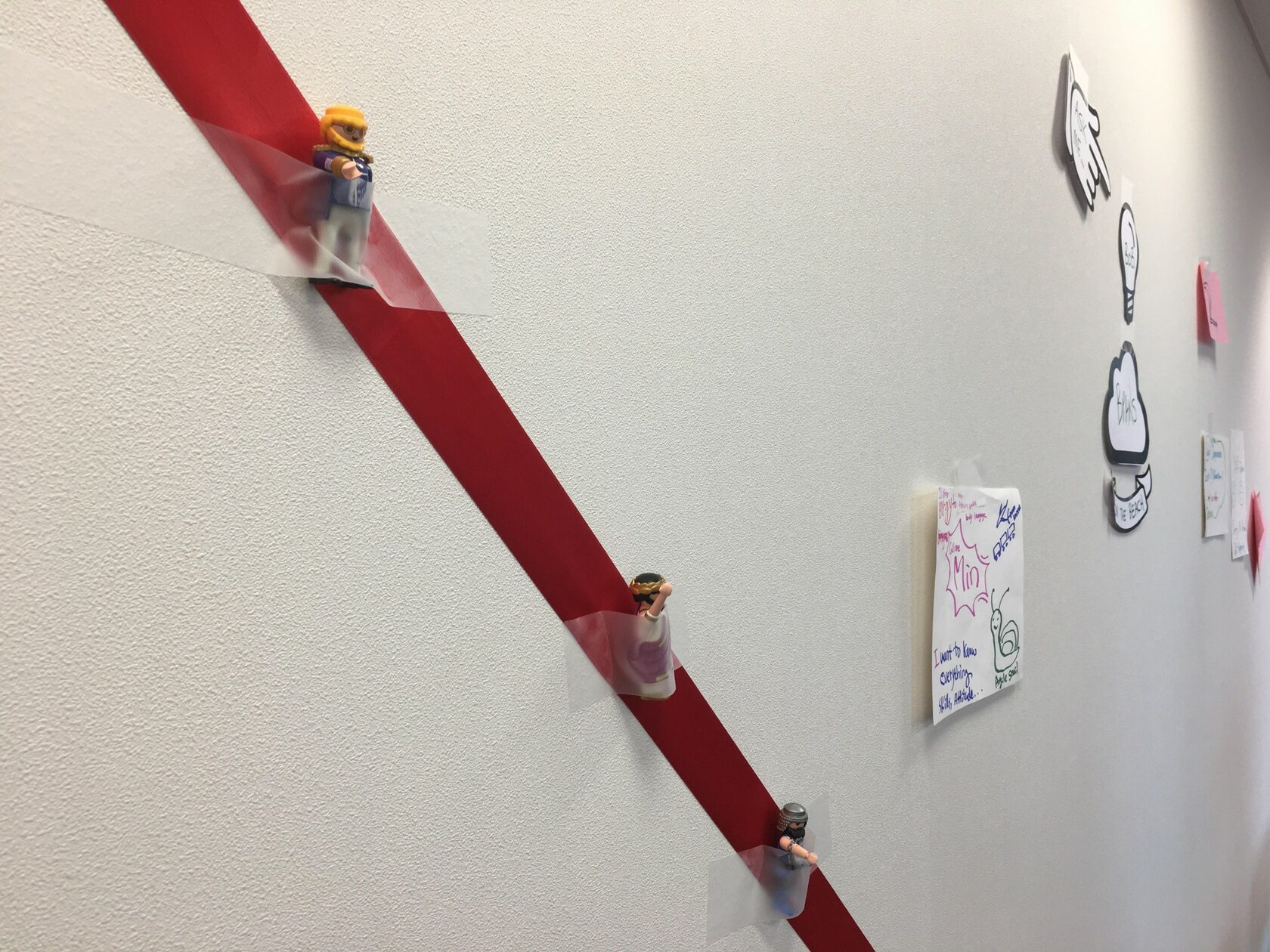

For example, images stuck to the walls and other items referring to the workshop topic were actively used at Paris masterclass on the city of the future.
Taking advantage of the floor as one of the elements, which includes the transfer of flip charts on a horizontal surface, is becoming more and more popular at conferences. A floor fabric tablecloth was put on the floor at one of the workshops in Japan simultaneously conducted by 4 facilitators from different countries. The facilitators placed cards and gizmos they brought from their native countries on the cloth. One more interesting case — there were no tables at a final large-scale plenary session, carton circles were used instead. people were sitting on them alltogether and drawing. this allowed them to get rid of the barriers and establish collaborative attitude. That is really important — during a facilitation session especially at the primary stage you need to encourage people to withdraw from the beadledom often characteristic to the very beginning.
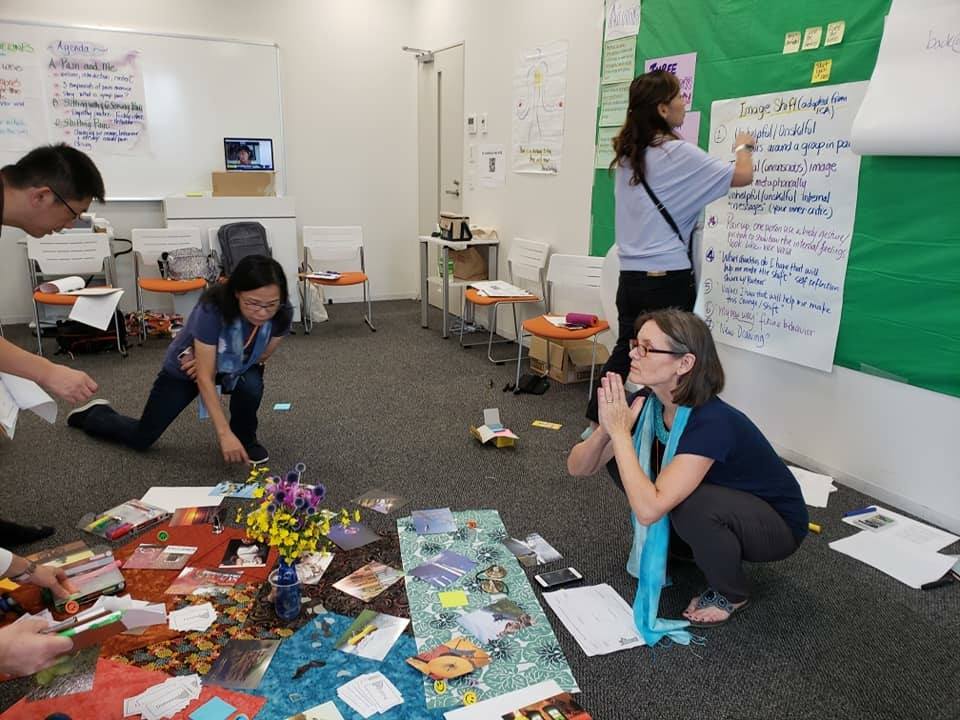
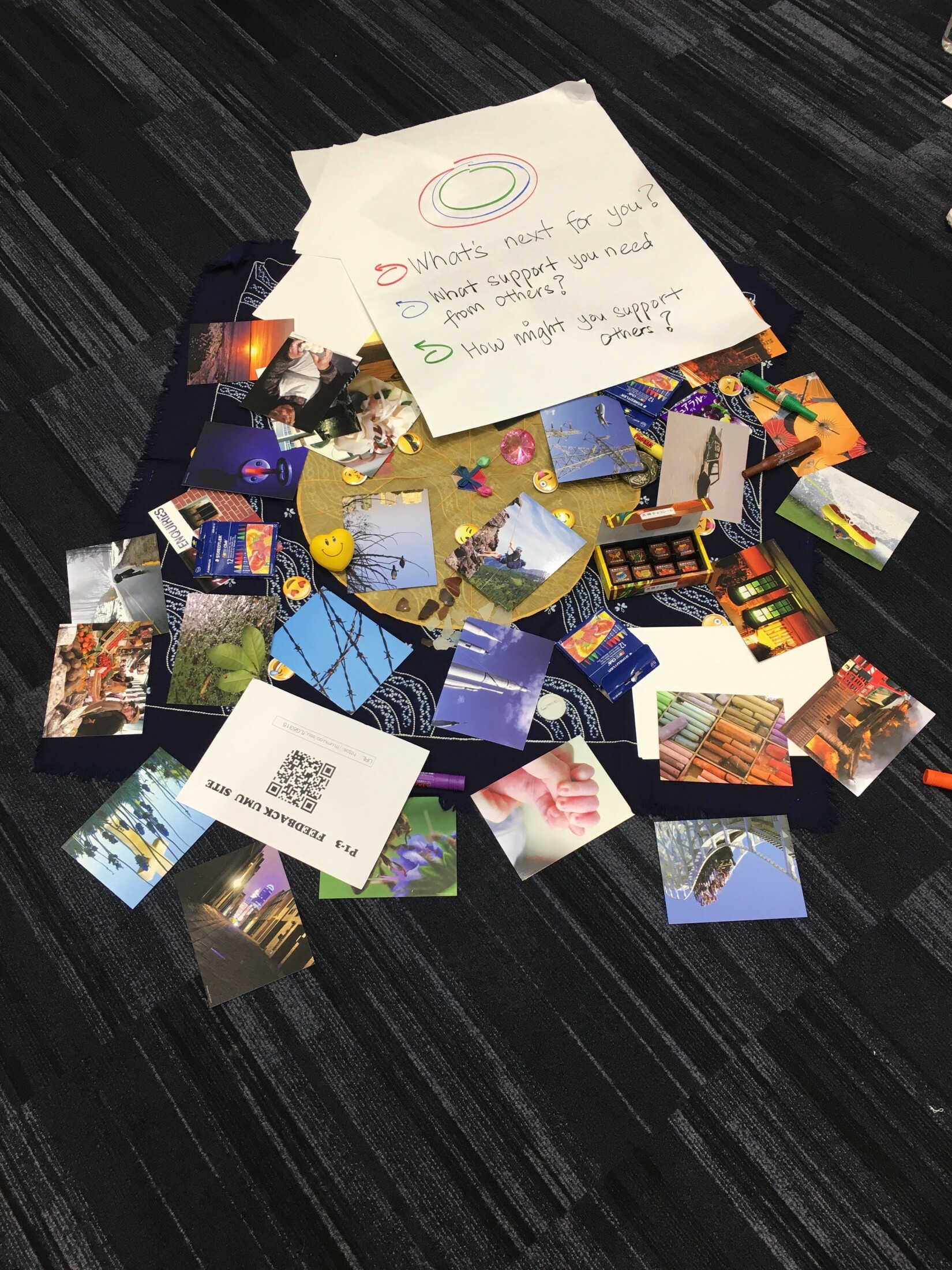
At one of the workshops in Europe it was possible to avoid any formalities by using no tables and creating a specific format of the event led by a facilitator-choreographer. Workshop participants had themselves to take care of the chairs and use them to shape the space of the workshop.

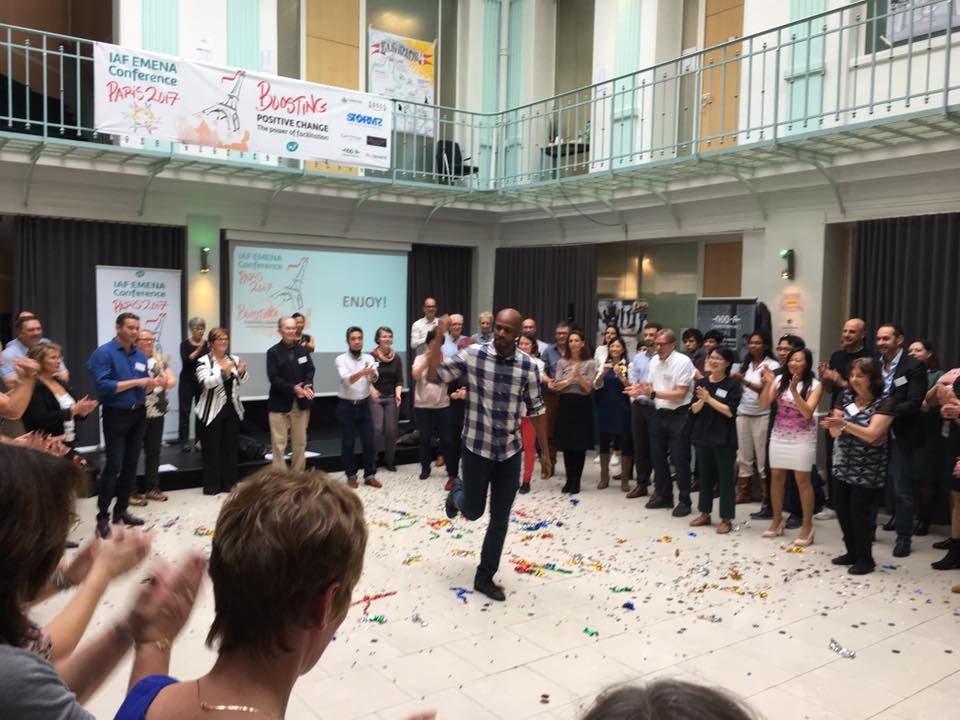
Visuals are not the only things to shape the overall picture of the process. Ever more often we hear music at facilitation workshops, especially during some creative piece of work. Background music is very common for Asia. Another peculiarity — there are lots of sweeties at master classes in asia. it means we are talking about the whole environment, not just about some of its specific surfaces or elements.
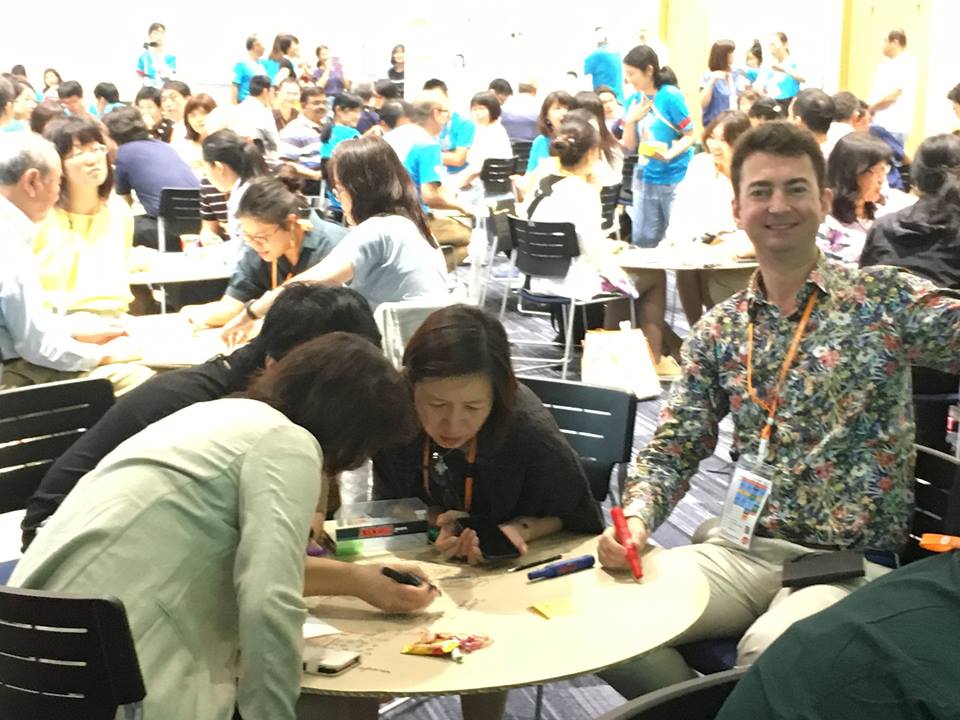

At first glance it may seem strange and confusing but during the workshop, it becomes clear, that these “tricks” impact the creative work in a favourable way.
4. Greater importance of deep work on facilitator personality, implemented tools, ethics and IAF competencies
It is evident that many foreign masterclasses were aimed at a deep work on the personality of a facilitator. The following questions were discussed at one of the workshops in Asia called «Looking for your own compass and direction»: «What pathway should you follow as a facilitator? In what direction should you develop yourself?» It was a whole day workshop and every participant answered the questions: «When did his or her facilitation career start? How has it been developing? Where is he or she now? Where he or she is planning to be? Why does he or she need that?»

It means a deep work was on, they grew aware of what had been already done and started to understand what their next steps should be.
There was even a deeper work at another training where participants thought through the answers on such questions as «What do we need it for?», «Who are we?», «What kind of barriers block us?», «What kind of inner work is demanded?» The training embraced elements of
psychodrama approach, some of the participants cried. Related themes were brought up at some other events «Personality work and social influence: dynamics of flexible change and transformation», «Studying the «I» concept and shifting to «We»». The work on deeper layers of meaning was done at a European conference «Facilitation with Passion and Purpose».
Foreign approach differs greatly from the one practiced in Russia. People mainly attend Russian trainings to gain specific and simple facilitation tools. Deep facilitator personality workshops are not so popular yet. Very often it results in unprofessional collisions, when a facilitator offers a tool not yet understanding and not sorting out the issue and the situation at large. If you think of a facilitator as of an iceberg than those tools are— JUST THE TOP OF IT.
The level of facilitator competencies is another important topic at the international arena. This is the most significant aspect according to AIF that is actively fostering its development. This topic is also the theme of a series of conference workshops, e.g., one of them held in Asia was called «Core competencies across real life and cultures».
IAF developed a set of core competencies of a professional facilitator on the market. in the beginning of many trainings the facilitator pronounces what core competencies the group is going to work on.
5. The growth in the number of facilitators with a particular profile
The number of professional facilitators is growing each year. As a result facilitation branches out into different specialisations. This trend has been developing in the West, in America and in Asia for quite a long time and now it is playing a significant role. The usual question participants ask each other at a conference in North America is «What do you specialise in?»
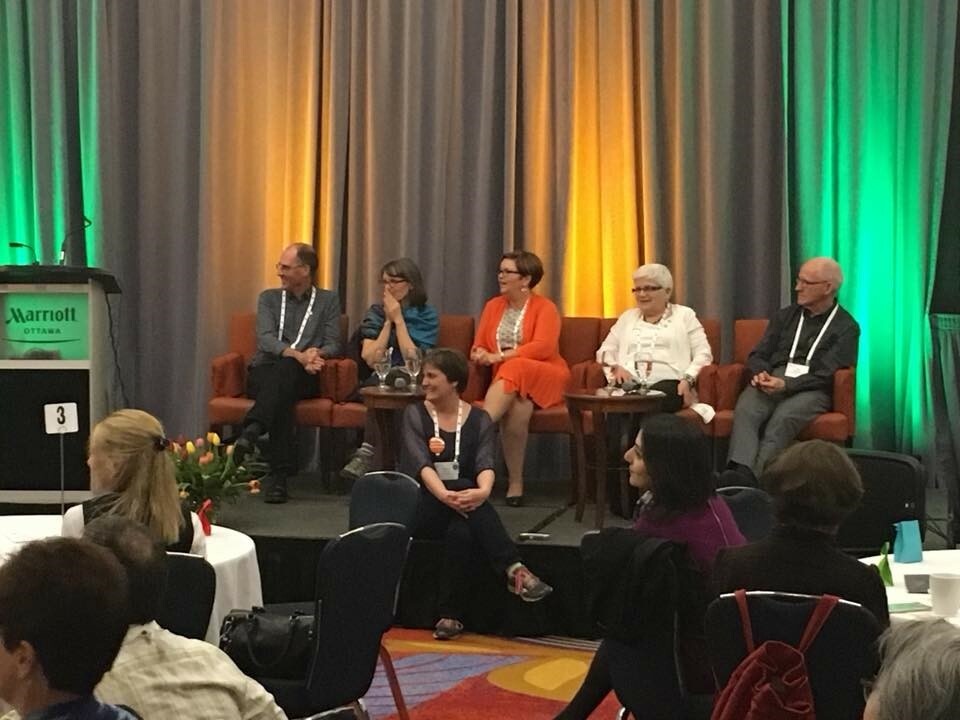
Here are some of the areas of specialisation:
- • Methods. Some focus on session types (e.g., strategic planning sessions)
- • Clients. Some specialise in working with a particular kind of audience.
- • Sessions. Others chose to be proficient in certain facilitation methods (method of positive change AI, creative techniques or Technology of Participation /ToP method/).
In Russia this trend is not very common in russia yet and the specialisation among facilitators is not strongly defined. usually one faciltator does sessions in various or even in all domains.
6. Erasing geographical and cultural interaction boundaries, synergy of facilitator experience different levels of expertise
The art of facilitation is undergoing an active stage of globalization. Facilitators are less and less associated with a particular country; the number of international projects is growing. Facilitators from different countries attend international conferences. At the Asian Conference there were in addition to local countries (Japan, Singapore, Hong Kong, China) participants and facilitators from Australia, India, USA, Canada, Netherlands, Finland, Sweden, Russia. At the conference in North America conversely there were facilitators from Europe, Asia, India, South America. This allows to significantly expand the perspective of a facilitator and to see various styles and techniques of facilitation.
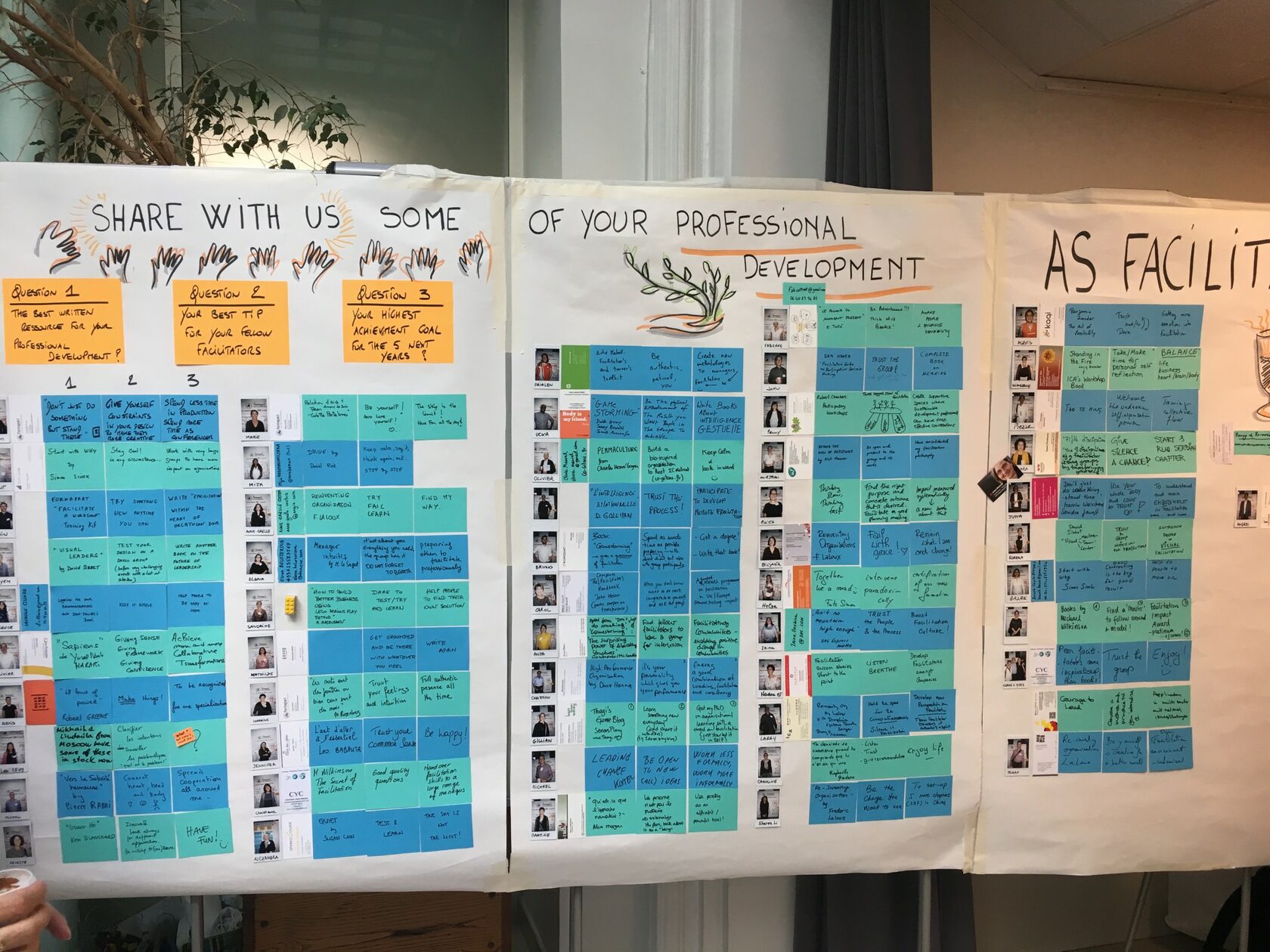
The shift from competition to cooperation is on. Outside the conference framework facilitators from multiple countries conduct sessions in different corners of the world. Given that the erasing of not only geographical, but communicational, national and cultural boundaries is taking place. these boundaries are being gradually erased and international facilitator cooperations are being created.
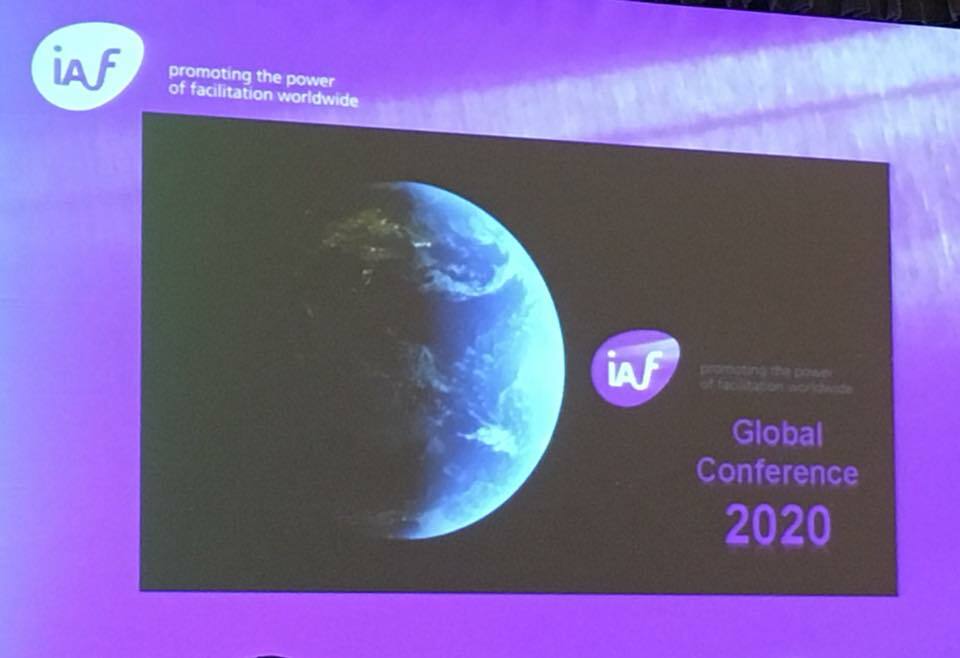
That means more than just the expanding of geography. Almost 90% of workshops in Asia were conducted by 2-3 or even by 4 facilitators. Sometimes experts had the same level of skill. However, master-classes with one facilitator being a mentor and a guru and the other being his assistant or student were very common. So, at the conference in North America, the facilitator training was done by psychodrama expert Roger Schwartz from Australia, and the assistants part was taken by Noel Tan a certified CPF facilitator, head of the facilitator association in 2016-2017. In turn, Barbara Mackay an international certified CPF facilitator from IAF Hall of Glory gave trainings together with both CPF facilitators and novice facilitators. Such cooperation allows to share and exchange different experiences with others erasing boundaries of age, culture, etc.
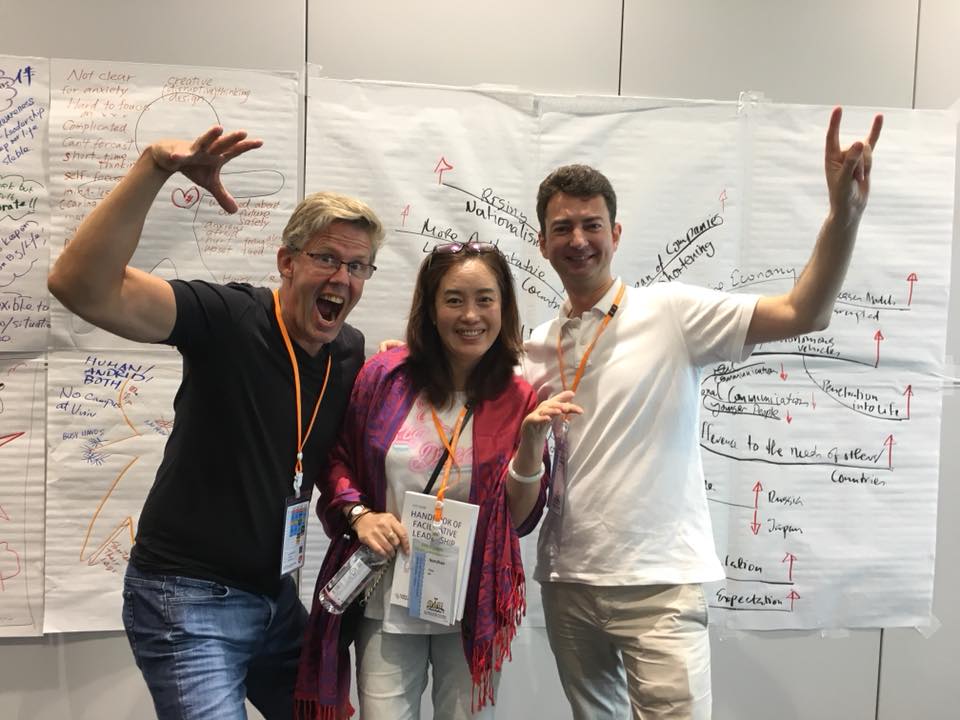
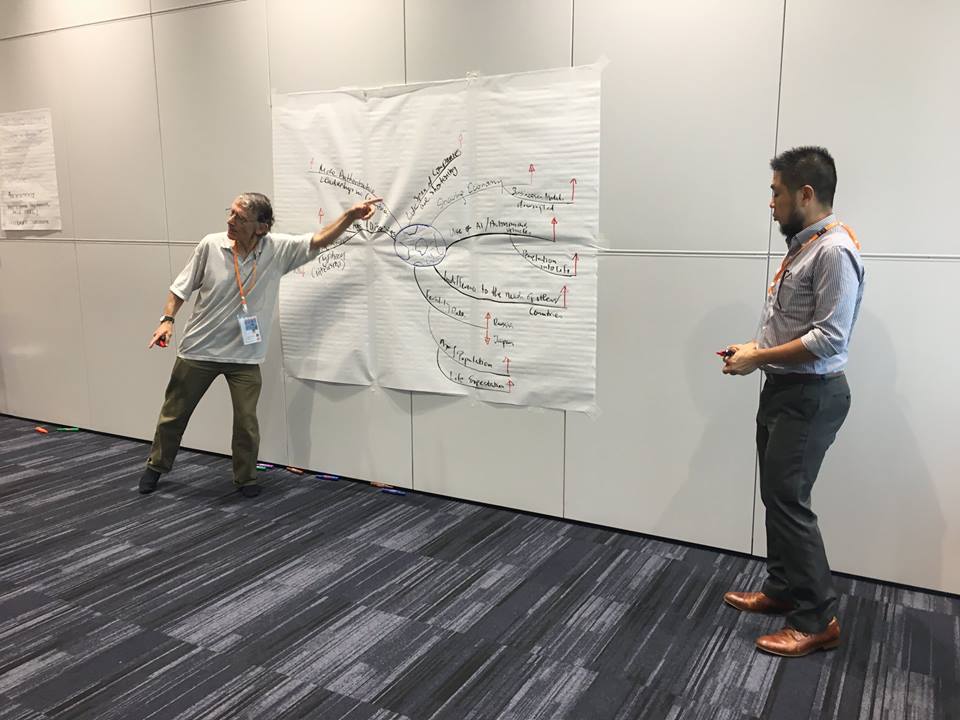
One of the master classes in North America was devoted to the development of facilitators. The experts provided various examples of enriching their experience: some did facilitation sessions for tribes in Africa; others worked with groups they had never collaborated before, for example, with schoolchildren. All these new challenges allowed them to reframe their perceptions of the facilitator activities, to build a more balanced work approach to continue using new tools during their strategic sessions. Exploration of other cultures is an extremely important aspect if you want to improve the quality of your facilitation sessions.
As it’s known that at large crossing boundaries is a very popular trend in business. For example, international companies and corporations have a tradition of redeploying staff to company affiliates in other regions or countries. This boosts financial development, profitability, broadens the amount of tools implemented and so on.
In Russia the presence of 2 or more facilitators from different companies is perceived rather as a functional need, than a demand for mutual learning, development and growth of facilitators. The MBF programme (Master of business facilitation) launched by two CPF IAF facilitators from different companies is the only exception in the domestic market created by Andrei Kolesnikov from PowerLexis and Aleksandra Kosulina from F-Point. The programme is unique also because for teaching they engaged 8 facilitators from different countries.
7. The overall facilitation development and the growth of IAF impact around the world
Facilitation has been developing very actively around the world in recent years. Each year there is a marked increase in the number of facilitators. This domain only just starts emerging in many countries now being more actively used and implemented.
For example, in Africa, the number of IAF members has doubled over the past 2 years. Asia is a leader in absolute growth of the number of IAF members. So the role of certification is increasing, and that ensures a significant growth and development boost.
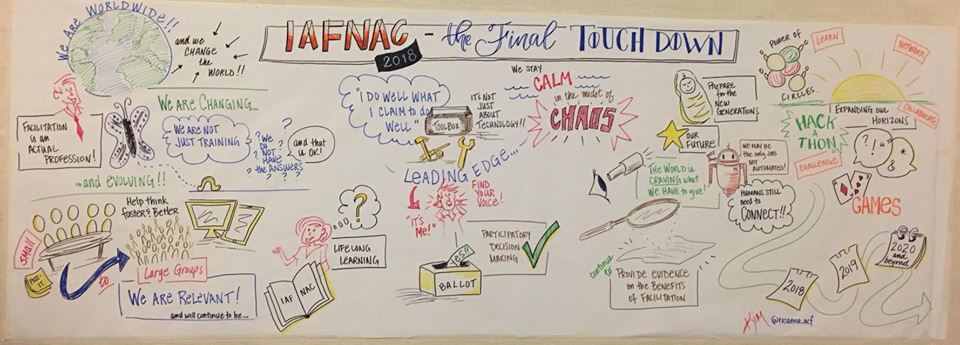
The consolidation of the list of generally accepted standards and key competencies of a professional, as well as obtaining certification become hugely important. In other related areas, for example, in coaching, a similar approach has already been shaped.

The development and implementation of professional facilitation criteria is actively sponsored by the international association of facilitators iaf, which embraces facilitators from more than 65 countries. The IAF as a professional association sets international industry standards, provides accreditation, supports the community, promotes and develops the domain of facilitation. The IAF certification is the most valued one among professional facilitators, recognized worldwide it guarantees the skill and the high level of a professional.
The Certification is very common abroad. For example, in the United States Central Bank alone there are 15 internal CPF facilitators.
Apart from the international association there are numerous regional associations with a fairly large number of participants. For example, in Japan the local facilitator association includes more than 1,500 members.

Membership in specialised associations grants a great number of bonuses and advantages. For example, an IAF member has the opportunity to communicate with other more experienced facilitators, get consultations, acquire a mentor, and even get help with creating a session script or applying a method.
The profession of a facilitator is relatively new in Russia, and so far international certification has not become widely popular.
But for professionals from Russia, certification is also an opportunity to manifest themselves internationally, an opportunity to evaluate their professional skills, get feedback from colleagues with 10 year seniority, an opportunity to enter the international community and develop within the framework of high standards.
